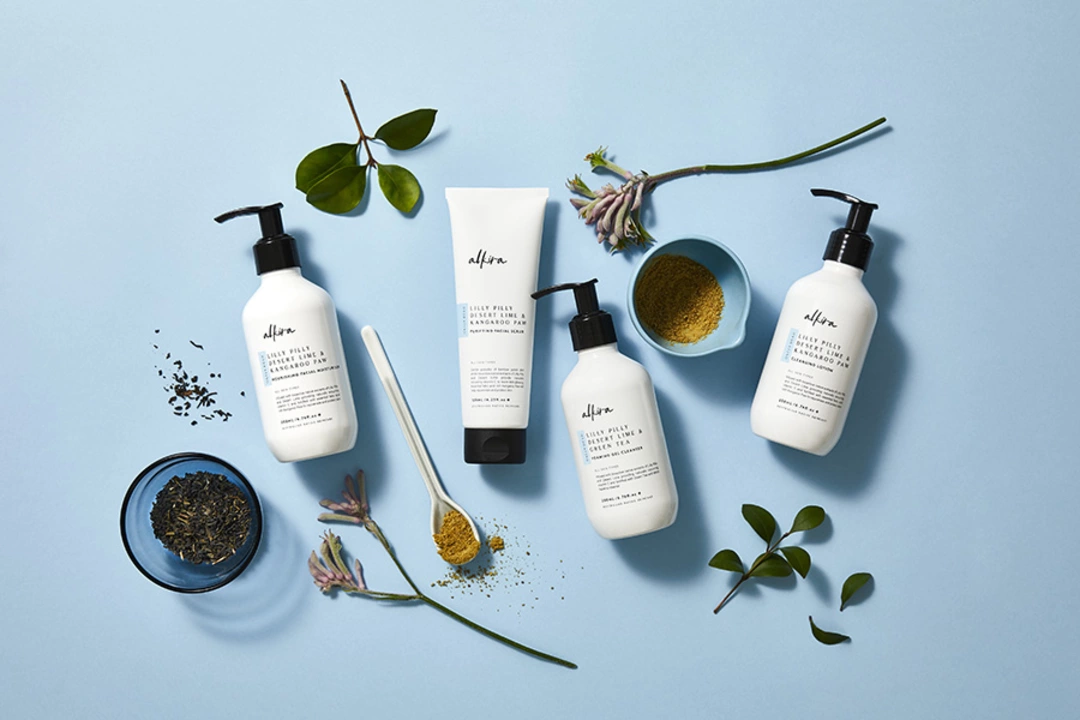Introduction to Allantoin
When it comes to skincare, there are countless ingredients that promise to improve the overall health and appearance of our skin. One such ingredient that has gained popularity in recent years is allantoin. In this article, we will explore the benefits of allantoin, its many uses in cosmetics, and why it has become a go-to skincare ingredient for many. So, let's dive in and learn more about this fascinating compound.
The Science Behind Allantoin
First, let's take a closer look at what allantoin is and how it works. Allantoin is a naturally occurring compound found in plants like comfrey, chamomile, and wheat sprouts. It can also be synthesized in a laboratory setting, making it a versatile and readily available ingredient for cosmetic use. The primary function of allantoin is to help soothe, heal, and protect the skin. It does this by promoting cell proliferation and wound healing, which in turn aids in the regeneration of healthy skin cells. Furthermore, allantoin has anti-inflammatory and anti-irritant properties, making it an ideal ingredient for those with sensitive or irritated skin.
Allantoin's Moisturizing Benefits
One of the main reasons why allantoin is a popular skincare ingredient is because of its ability to moisturize the skin effectively. Allantoin acts as a humectant, meaning it helps to attract and retain moisture in the skin. This is particularly beneficial for those with dry or dehydrated skin, as it can help to maintain optimal hydration levels and prevent moisture loss. Additionally, allantoin's moisturizing properties can also help to improve skin's overall texture and appearance by reducing flakiness and promoting a smoother, more even complexion.
Allantoin and Sensitive Skin
If you have sensitive or easily irritated skin, allantoin is an ingredient you'll definitely want to look for in your skincare products. As mentioned earlier, allantoin possesses anti-inflammatory and anti-irritant properties, which can help to soothe and calm the skin, reducing redness and discomfort. This makes it a particularly valuable ingredient for those with conditions such as eczema, rosacea, or even acne, as it can help to alleviate some of the symptoms associated with these skin concerns. Furthermore, allantoin's ability to promote cell proliferation and wound healing can also aid in the repair of damaged or compromised skin barriers, which is often a factor in sensitive or reactive skin types.
Allantoin in Anti-Aging Products
While allantoin may not be the first ingredient that comes to mind when thinking about anti-aging skincare, it does have some noteworthy benefits in this area. Allantoin's ability to promote cell proliferation and wound healing can help to stimulate the production of collagen and elastin, which are essential for maintaining skin's firmness and elasticity. This can result in a reduction in the appearance of fine lines and wrinkles, giving the skin a more youthful and radiant appearance. Additionally, allantoin's moisturizing and skin-soothing properties can help to keep the skin looking and feeling healthy, which is crucial for maintaining a youthful complexion.
How to Incorporate Allantoin into Your Skincare Routine
Now that you know the benefits of allantoin, you may be wondering how to incorporate it into your skincare routine. The good news is that allantoin can be found in a wide variety of cosmetic products, from cleansers and moisturizers to serums and masks. When shopping for skincare products, look for those that list allantoin as one of the active ingredients. Additionally, you may want to consider choosing products that are specifically formulated for sensitive or irritated skin, as these are more likely to contain higher concentrations of allantoin.
In conclusion, allantoin is a versatile and highly beneficial skincare ingredient that can help to address a variety of skin concerns, from dehydration and irritation to signs of aging. By incorporating allantoin into your skincare routine, you can enjoy healthier, more radiant skin that looks and feels its best. So, next time you're shopping for skincare products, be sure to keep an eye out for this powerhouse ingredient!










Allantoin shows up in a few moisturizers I use. I’ve never dug into its science before.
When you look at the molecular structure of allantoin, you’ll notice its capacity to bind water and promote cell turnover. That dual action makes it a solid ally for both hydration and repair. It’s also gentle enough for sensitive skin, which is why many dermatologists recommend it in post‑procedure formulas. In practice, you can find it in cleansers, serums, and even eye creams without the buzz‑word overload. Overall, think of it as a quiet workhorse that lets the skin focus on healing rather than fighting irritation.
Wow-so you’re basically saying that this tiny molecule is the unsung hero of every cruelty‑free cocktail, huh??! I mean, it’s practically a miracle, isn’t it, darling??, and yet the marketing decks barely whisper its name, lol!! Besides, the way you glorify it with poetic flair, it almost feels like a love letter to a lab‑grown compound, omg!!!
The ontological implications of allantoin’s proliferative signaling cannot be dismissed as mere cosmetic fluff. Its mechanistic pathways intersect with keratinocyte mitosis, thereby modulating epidermal homeostasis at a cellular level. By leveraging this bio‑active, formulators transcend superficial moisturization and enter the realm of regenerative dermatology. Consequently, the market’s infatuation with allantoin reflects a paradigmatic shift toward function‑driven aesthetics.
I hear you, the science can feel like a maze, but the end result is smoother skin. When you see less redness after a week, that’s the real payoff.
Sure, because we all need another buzzword in our bathroom cabinets.
Esteemed readers, allow me to elucidate the quintessential virtues of allantoin within dermal therapeutics. First, its hygroscopic nature facilitates sustained hydration across the stratum corneum. Second, the molecule’s anti‑inflammatory properties attenuate erythema, rendering it indispensable for compromised barriers. Third, its promotion of cellular turnover underpins the gradual attenuation of fine lines. In sum, allantoin operates as a silent sentinel guarding cutaneous integrity.
While your prose is undeniably theatrical, it contains several syntactic inaccuracies that merit amendment. For instance, “dermal therapeutics” should be preceded by a definite article, and “hygroscopic nature facilitates sustained hydration” would read more clearly as “its hygroscopic nature facilitates sustained hydration.” Moreover, the serial comma is missing before the final clause. Precision in language mirrors the precision you commend in the ingredient itself.
Using chemicals you can’t pronounce is simply irresponsible.
It’s fascinating how a single compound can bridge the gap between soothing and repairing. Allantoin’s ability to calm inflammation makes it a mainstay for those battling rosacea, yet its role in collagen synthesis hints at anti‑aging potential. When formulating a regimen, pairing it with antioxidants can amplify overall skin resilience. Users often report a noticeable reduction in flaky patches within days, which underscores its humectant prowess. The ingredient’s versatility also means it cooperates well with both oil‑based and water‑based vehicles. From a practical standpoint, its stability ensures product shelf‑life remains uncompromised. Ultimately, the inclusion of allantoin signals a thoughtful approach to comprehensive skin health.
Allow me to dissect the entire premise you just presented, for clarity’s sake. First, the assertion that allantoin bridges soothing and repairing is not merely anecdotal; peer‑reviewed studies have quantified reductions in transepidermal water loss after topical application. Second, its anti‑inflammatory cascade involves downregulation of cytokines such as IL‑1α, which directly mitigates erythema. Third, the promotion of fibroblast activity, albeit modest, contributes to incremental collagen deposition over extended periods. Fourth, pairing allantoin with antioxidants creates a synergistic environment where free radical scavenging is complemented by barrier reinforcement. Fifth, the user‑reported reduction in flakiness aligns with its humectant capacity to attract and retain up to 30% of its weight in water. Sixth, the stability you mention is attributable to its low oxidation potential, allowing formulation chemists to incorporate it without extensive encapsulation. Seventh, compliance with both oil‑based and aqueous systems stems from its amphiphilic nature, which prevents phase separation. Eighth, the ingredient’s modest molecular weight (~158 g/mol) facilitates dermal penetration without compromising the stratum corneum. Ninth, regulatory bodies across the EU and US have granted it wide‑scale acceptance up to 0.5% in leave‑on products, underscoring its safety profile. Tenth, the claimed anti‑aging benefits, while subtle, are supported by histological analyses showing modest elastin fiber reorganization. Eleventh, from a consumer psychology perspective, the “quiet workhorse” narrative resonates because it avoids the hype‑driven marketing of flashier actives. Twelfth, the cost‑effectiveness of allantoin allows formulators to allocate budget toward other complementary actives. Thirteenth, its inclusion in post‑procedure protocols reduces recovery time, which is a tangible clinical outcome. Fourteenth, the differentiation between synthetic and plant‑derived sources is largely irrelevant to efficacy, as the core molecule remains unchanged. Fifteenth, the overarching theme is that allantoin embodies a balance of function and simplicity, a rarity in contemporary cosmeceuticals. Finally, embracing such a multifaceted ingredient can elevate a skincare routine from merely cosmetic to genuinely therapeutic.
Honestly, I think the hype around allantoin borders on pretentious. It does what it says, but it’s not a miracle cure. Most of the time, good ol’ basic moisturizers work just as fine.
I appreciate your candid perspective, and it’s true that formulation context matters. While allantoin isn’t a panacea, its documented benefits can enhance product efficacy when used appropriately. Therefore, dismissing it outright may overlook its nuanced contributions.
Great stuff, keep the skin happy!
yeah, totally love the vibe, looks easy to add.
Permit me to address a few grammatical lapses in the preceding remarks: “great stuff” should be capitalized at the beginning of a sentence, and the phrase “keep the skin happy” would benefit from a period to terminate the statement. Additionally, the use of “looks easy to add” lacks a subject; a more precise construction would be “it looks easy to add.” Such attention to linguistic detail mirrors the meticulousness required in formulating effective dermal solutions.
Thank you for the constructive feedback; I will incorporate those suggestions moving forward. Precision in both language and formulation ultimately serves the community best.